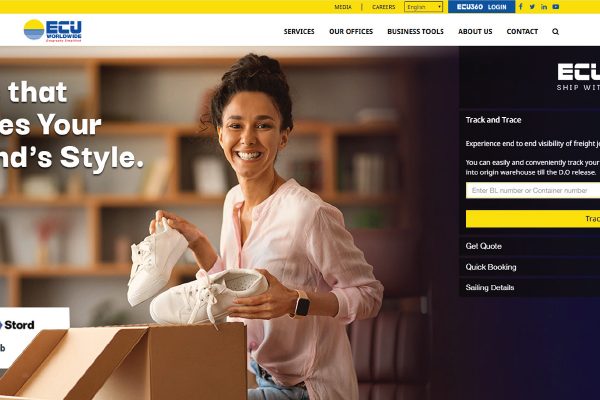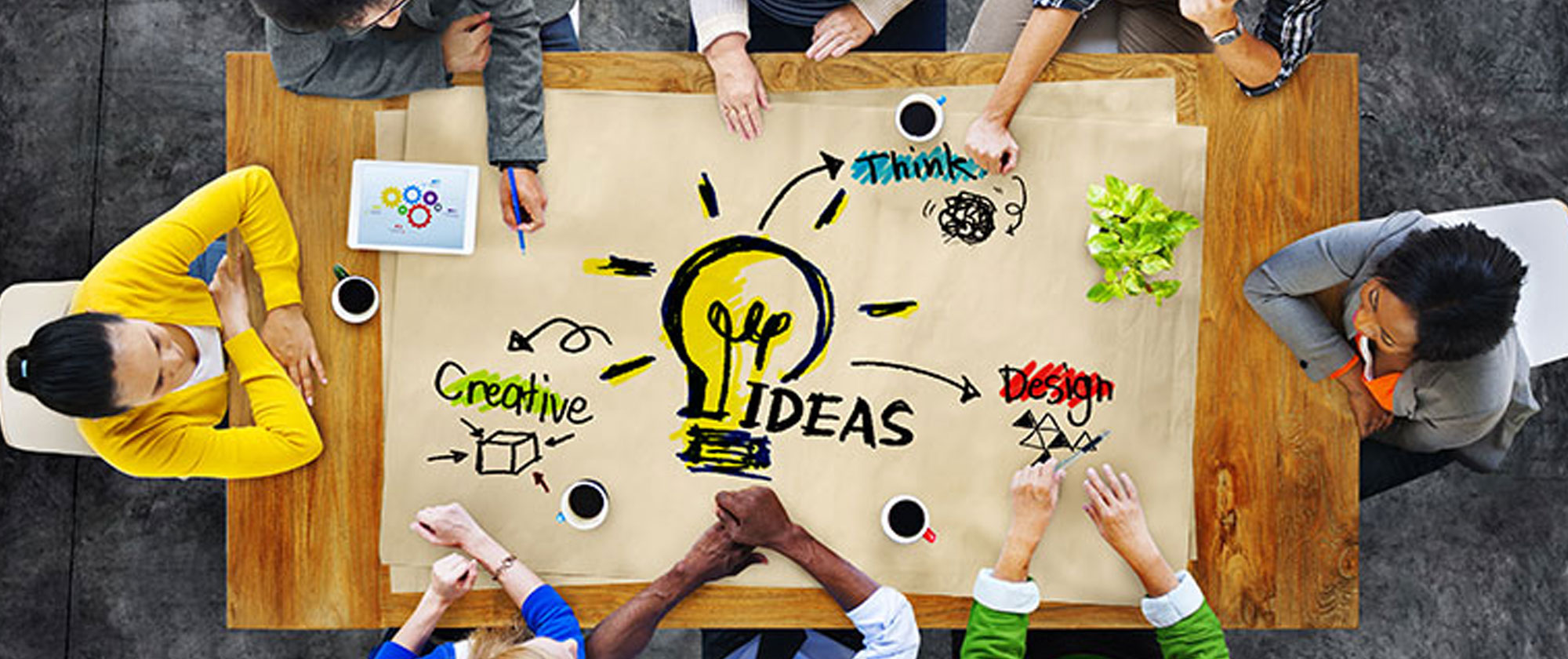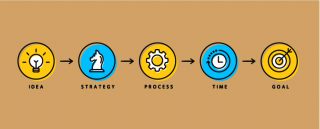Kaustubh Dhargalkar, a PhD in Corporate Innovation & Design Thinking, is an entrepreneur-turned-academician and innovation evangelist. He founded three companies from 1990 to 2005 in the domain of productivity enhancement technologies for manufacturing. Currently, Kaustubh consults large corporates (HP, Daimler India, Mercedes Benz, Citibank, Mahindra Group, etc.) on how to enhance their innovation quotient. He trains executives in DT and Breakthrough Concept Creation.
 The last two decades have witnessed tremendous disruption across all sectors. The acronym VUCA — Volatile, Uncertain, Complex, Ambiguous — (coined by the US Military) has never been so apt. In business, or otherwise, no one likes unpredictability.
The last two decades have witnessed tremendous disruption across all sectors. The acronym VUCA — Volatile, Uncertain, Complex, Ambiguous — (coined by the US Military) has never been so apt. In business, or otherwise, no one likes unpredictability.
So, how does an organisation respond to a situation when there is no relevant data for decision-making? What does the manager rely on to formulate strategy? This is where the “open-ended, exploratory, deeply human-centric, imaginative approach of a designer” proves to be immensely helpful, wrote IDEO CEO Tim Brown in a June 2008 article in Harvard Business Review.
What is Design Thinking?
Design Thinking (DT) is an approach to problem-solving that keeps the intended user of the product/service at the center at all times, right from the stage of identifying the right problem to ideation for a solution to the prototyping and testing of the solution.
DT encompasses people (by observing them and gaining insights from their patterns), ideating (brainstorming, looking at a problem from multiple perspectives), iterative prototyping (visually/physically representing the thinking), and scenario-building.
A few decades ago, designers were brought in at the end of the product creation process to beautify the product by introducing some fancy aesthetics. Today, forward-thinking companies are involving design thinkers to answer the question “What to make?” rather than “How to beautify what is made?”
This shift has happened because the high “empathy quotient” or EQ of a design thinker helps him or her to quickly capture the latent, unarticulated needs of the consumer. The high EQ stems from the relentless emphasis on human-centricity as the main building block of DT.
Great technology, unless it finds users, cannot be termed an innovation.
The ‘How’ of DT
Multiple agencies have their proprietary frameworks of using the methodology. Two most famous ones are:
1. The British Design Council’s 4D template.

Step 1. Discover: Deep “user understanding.” Empathy is paramount here.
Step 2. Define: Capturing the insights garnered during Step 1 to generate well-defined problem areas and project scoping.
Step 3. Develop: Generating multiple options for the defined problems.
Step 4. Deliver: Execution and rollout phase.
2. D-School at Stanford University captures DT as follows:

As is obvious, both templates follow a similar sequence. The D-School breaks up the “Deliver” phase into “Prototyping” and “Testing,” keeping the user at the center at all times.
In Figure 2, the various tools and principles to be kept in mind have been enumerated for better clarity.
The following figure will make it clear as to how the DT methodology — which tools and principles at what stage — should be applied in a corporate project execution process.

The coloured arrows on the extreme left denote the sequence of the steps that a corporate usually follows, and the black arrows depict the co-relation with the steps involved in the DT methodology.
With this background, let us now examine the utility of DT in transforming a company.
The cornerstones of DT can be summarised as follows:
- Empathy: Design thinkers are able to visualise the world from multiple perspectives. By taking a “people first” approach, they can imagine solutions that are highly desirable and meet both explicit and latent needs. This disrupts and inspires innovation.
- Integrative Thinking: They go beyond analytical thinking, which produces either/or choices. They are able to see the larger picture, connect the dots, and create novel solutions that sometimes exceed imagination.
- Optimism: They believe that despite challenging constraints, there is something better than existing alternatives.
- Experimentalism: Breakthrough innovations don’t happen through incremental tweaks. Design thinkers observe situations in unconventional ways that lead to completely new directions.
- Collaboration: Products/services are highly complex today, and demand multidisciplinary collaboration rather than the ingenuity of a single genius.
- Empathy: In the logistics industry, package tracking is an age-old process for ensuring traceability and transparency through the journey of the shipment. However, it was FedEx which brought that transparency to the front-end so that consumers could see where their package was in real time.
FedEx understood that they were not just transferring a package from one place to another, but that they were actually carrying people’s anxieties along with the package (a gift to a loved one, a CV to a prospective employer, an invoiced item that is a source of livelihood for someone).
The sender and the receiver lose sleep over whether the package reaches on time. FedEx empathised strongly with their users and created a user-friendly interface on their website (and later, on their app) that enabled the sender and receiver to track the exact location of the package in real time. This empathetic approach proved transformational for their business over the last two decades.
In India, Kishor Biyani’s inspirational journey with the Future Group captures all the aspects of the DT methodology. Biyani and his team at Future Retail try multiple variations before arriving at different formats. They follow a typical 90-day cycle which mimics the Discover-Define-Develop-Deliver cycle.
There are teams responsible for mining consumer insights (Deep Empathy). Certain ideas arising out of these insights are quickly tried out at a select few outlets, consumer response is captured, acted upon, and the offering modified (Experimentalism). Many ideas die in this 90-day cycle, but the pursuit continues (Optimism).
One of their initiatives, KB’s FairPrice, was launched as a neighbourhood convenience store. In order to communicate the intent of it being a fair price shop, SKUs would be stocked in the original cardboard cartons (received from distributors), with their front torn open. This is Integrative Thinking: going beyond analytical thinking and creating novel solutions.
Currently, the Future Group is in the process of creating a tie-up with local mom-and-pop (MP) stores where the MPs transact with the customer, as has been the case since ages, and the Future Group takes care of the back-end supply chain.
The MPs benefit from the cheaper supplies due to the Future Group’s bargaining ability with suppliers. They thus retain their existing customer base while benefiting due to cheaper and more efficient procurement and the Future Group gets last-mile access, which organised retail never had (Collaboration).
DT has been the building block on which Biyani has turned the Future Group into a formidable player in its space in less than 30 years.
Conclusion:
Companies must embrace the following tenets of DT to transform themselves:
The ability and willingness to empathise deeply with consumers
The ability to rise over one’s biases and frame problems from the consumers’ perspective
Overcoming the fear of failure and encouraging experimentalism
The ability to collaborate and create win-win situations in the ecosystem














